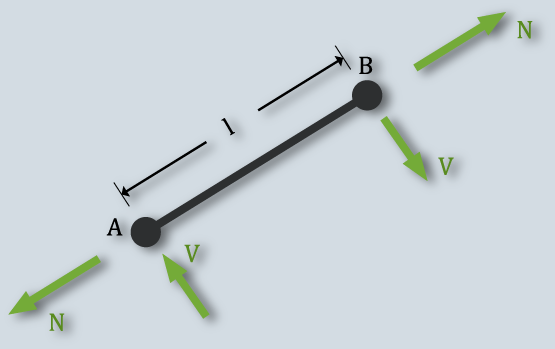| Home | Module 1 | Module 2 | Tutorials | Credits | Contact Us |
<<Back to the Previous Page <<Fundamentals <<Knowledgebase Fundamentals |
|||
Trusses Trusses are linear structures made of members that resist applied loads mainly through axial tension or compression rather than bending, and therefore they are structurally very efficient. However, this is valid only if the truss members are pin-connected and the loads act at the joints.
Considering that the truss members are not subjected to any loads but at the joints (their ends), the internal forces of a truss member can be considered as shown below (note that there is no moment at the pins so the member can freely rotate):
where
Since
Importantly, trusses are stable only if they are triangulated. This means that their configuration is made of triangles. If any member is removed such that this condition is violated, the truss becomes unstable. There is, however, one exception (Vierendeel truss).
|
© 2011 Virginia Polytechnic Institute and State University



